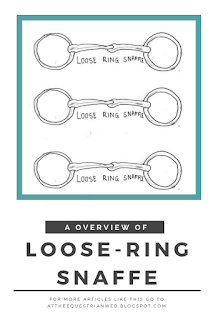The Loose Ring Snaffle
This is the most commonly used bit in the world. It’s a very mild bit, but as any other tool, it can be severe if used incorrect or with force.
The earliest recorded use of the bit date from about the time between the 14th and 8th centuries BC, which is within the bronze and Iron Ages. These horsemen lived in a region called Luristan, in Ancient Mesopotamia, modern day’s Iran. At first, they generally used leather and other organic material as bits, but soon that steadily evolved to metal bits, which looked similar to modern snaffle bits.
Loose Ring Snaffles are usually made of stainless steel, due to its durability and neutral taste. Chromium is added to reduce corrosion and to make it strong (and shiny), up to 10% of nickel is also added for even more durability. Some people are concerned that the nickel can cause allergies, but most high-quality stainless steel should coat over the nickel to not cause any problems.
Sometimes copper insets are added to promote salivation because a moist mouth equals a soft mouth. Some people are concerned that it will result in an electrical charge in the horse’s damp mouth. A few years ago, this kind of bits was curiously forbidden in USEf dressage rules. But the horses seem to like this bit, and many people feel that this is the best of bits.
All kinds of snaffles apply pressure to bars, tongue, and lips with a nutcracker action. The loose ring on the bit helps the horse to naturally relax his jaw, but they may pinch his mouth, so it’s best to use a bit guard to prevent any discomfort.
This bit is typically ideal for beginner horses and beginner riders, as it is mild, relatively cheap and easy to use. But even though it’s perfect to start with, it can be used for dressage, racing, show jumping and endurance, as well as pleasure or trail rides.




Comments
Post a Comment